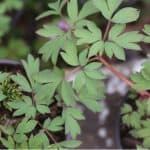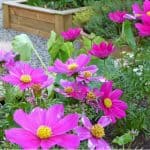Last updated on May 12th, 2022
Our site is reader supported, this means we may earn a small commission from Amazon and other affiliates when you buy through links on our site.
The Dicentra is also known as the Bleeding Heart plant and gets its name from the heart-shaped flowers that dangle creating an effect that looks as though the little hearts are bleeding.
These are shade-loving woodland plants that provide said flowers at the beginning of spring when not much else is flowering. They flower for several weeks so you can enjoy them for quite some time. Dicentra prefers to be planted in cooler climates and if exposed to conditions that are too warm they do not always grow as well.
This bodes well for UK climates where the weather is naturally cooler and often wet because they also like moist but free-draining soil.
A native plant to Asia, it produces pink, red, and white flowers in the spring but the Dicentra spectabilis is probably the most popular variety of them all, and thanks to its vigorous habit and red and white flowers many of these wonderful plants can be spotted in gardens throughout the UK. Once fully established, this herbaceous perennial can reach up to a metre tall and wide. It prefers to be planted in shaded areas with rich, moist soil that is somewhere between slightly acidic and neutral.
Learn how to grow Dicentra in pots in this guide here
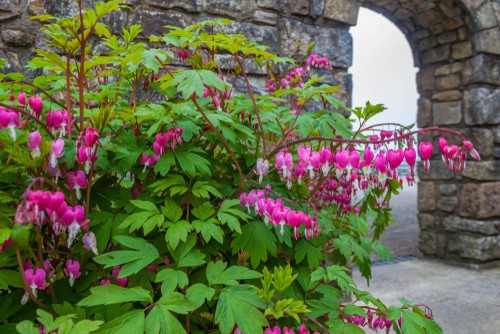
How to grow a Bleeding Heart
As mentioned, Bleeding Hearts plants are quite particular about the growing conditions they are in, namely the heat. They do not tolerate significantly hot summer weather which is one of the most common reasons why gardeners in very warm regions will have trouble with them. Most gardens in the UK are much better suited for them. They do tolerate almost all soil, with the exception of heavy clay soil or any soil that doesn’t have proper drainage leading to root rot.
Plant them in partial shade
They do best if grown in partial shade. Given the early flower production of this perennial, you can easily plant them near any deciduous trees in your garden so that they get ample access to warmth and sun with some light shading during their growing season and then protection from the tree branches and leaves when the summer heat is at its hottest.
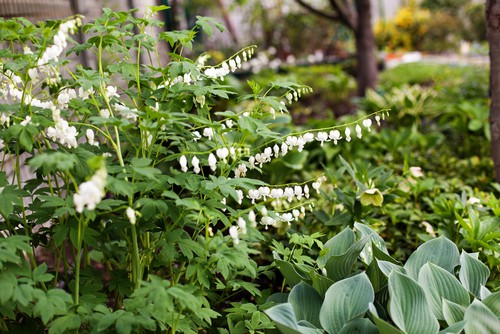
They prefer moist, humus-rich soil that is well-draining
If you can provide your Dicentra with humus rich and moist soil, with about 6cm worth of organic matter, they will thrive. It’s always important to improve aeration so that the roots have enough room to spread, as well as sufficient drainage so that the roots don’t suffer from root rot.
Mix in plenty of organic matter in the soil before planting. If the soil gets a little wet in winter we recommend adding some extra grit mixed into the soil to help improve drainage.
Watering your Dicentra – keep the soil moist but not waterlogged
When it comes to watering requirements for your Bleeding Heart plant, make sure that they are giving extra water in the warmer weather, even if you have noticed that the plant has died back as a result of warm weather.
If you recently planted your Dicentra, give it water from the offset to help it adjust to the new environment, but beyond that, treat it as you would any other woodland plant and simply provided it with a moist environment that is never too wet.
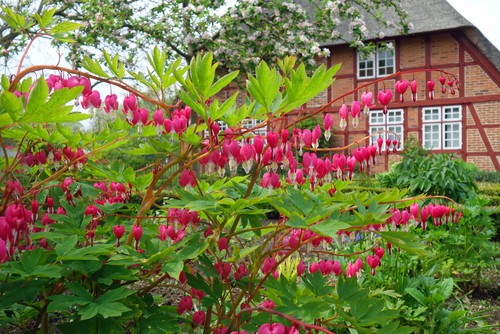
Feeding your Bleeding Heart plant and providing it with essential nutrients
Bleeding Hearts don’t need a lot of food, so you may not need to add fertiliser. The decision to incorporate some extra fertiliser into the soil is heavily dependent upon the type of soil you already have.
Decent soil with good compost mixed into it won’t need any additional fertiliser to keep it nutritionally balanced and to provide your Bleeding Heart with adequate food.
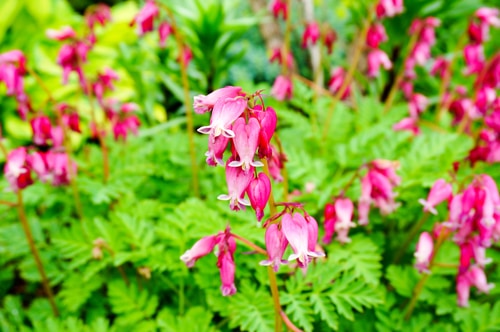
Mulch with leaf mould or homemade compost
On the other hand, if you have particularly difficult soil that is lacking in almost all vital nutrients, you can add fertiliser as a top dressing once a year, every spring. If you can help it, simply integrate organic soil every year and give a top dressing of leaf mould or homemade compost to avoid any extra fertiliser.
Pruning
Given the regrowth and nature of the plant, you actually don’t have to prune or deadhead it at all. You can leave the flowers if you see fit and propagate from the seeds, or you can trim back the foliage for aesthetic purposes before this happens. Remember that even if things are getting a little ragged in their appearance which they usually do being early flowerers, it won’t harm the plant to go without pruning.
However, if you want to shear it back to the basal growth you can and the Bleeding Heart will rebloom the following spring, or sometimes even for a second time in the same year.
Propagating
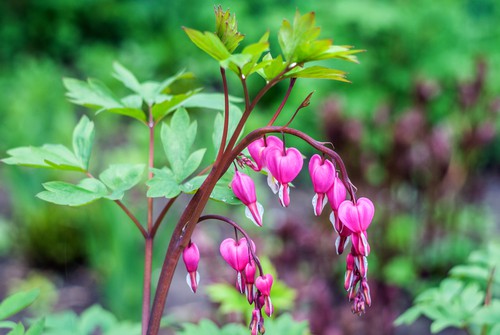
You can propagate Dicentra from seed, however, propagating by division is a much easier process. They don’t often self-seed in the garden to the point that they become a huge problem, but they will do it every year if you leave the flowers to become seeds.
Growing from seed
You can let them fall as they want to, or collect the seeds from the plant before this happens, and then sow them outdoors in the autumn in a different spot in your garden. You need to undertake this process in the autumn so that the seeds can endure the freezing temperatures for the first winter.
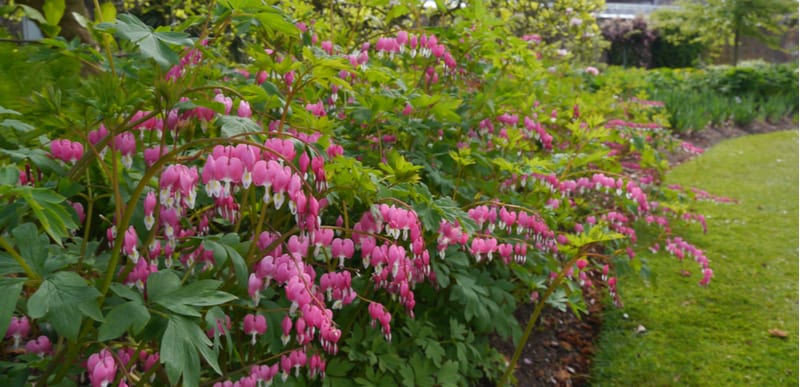
Dividing Dicentra
Alternatively to seeds, you can use division or cuttings to propagate your Dicentra. If you have a Bleeding Heart plant that is significantly larger (and mature) you can divide them in spring just as new growth begins to appear.
Learn more about dividing Dicentra in this guide by clicking here
Taking cuttings
Cuttings can be propagated indoors in potting soil with a plastic bag or container around them they have developed roots and can be moved outside. If you are placing your cuttings outside you need to adhere to the same rule as seeds in that they have to be transplanted in the autumn so that they can endure the freezing temperatures initially.

